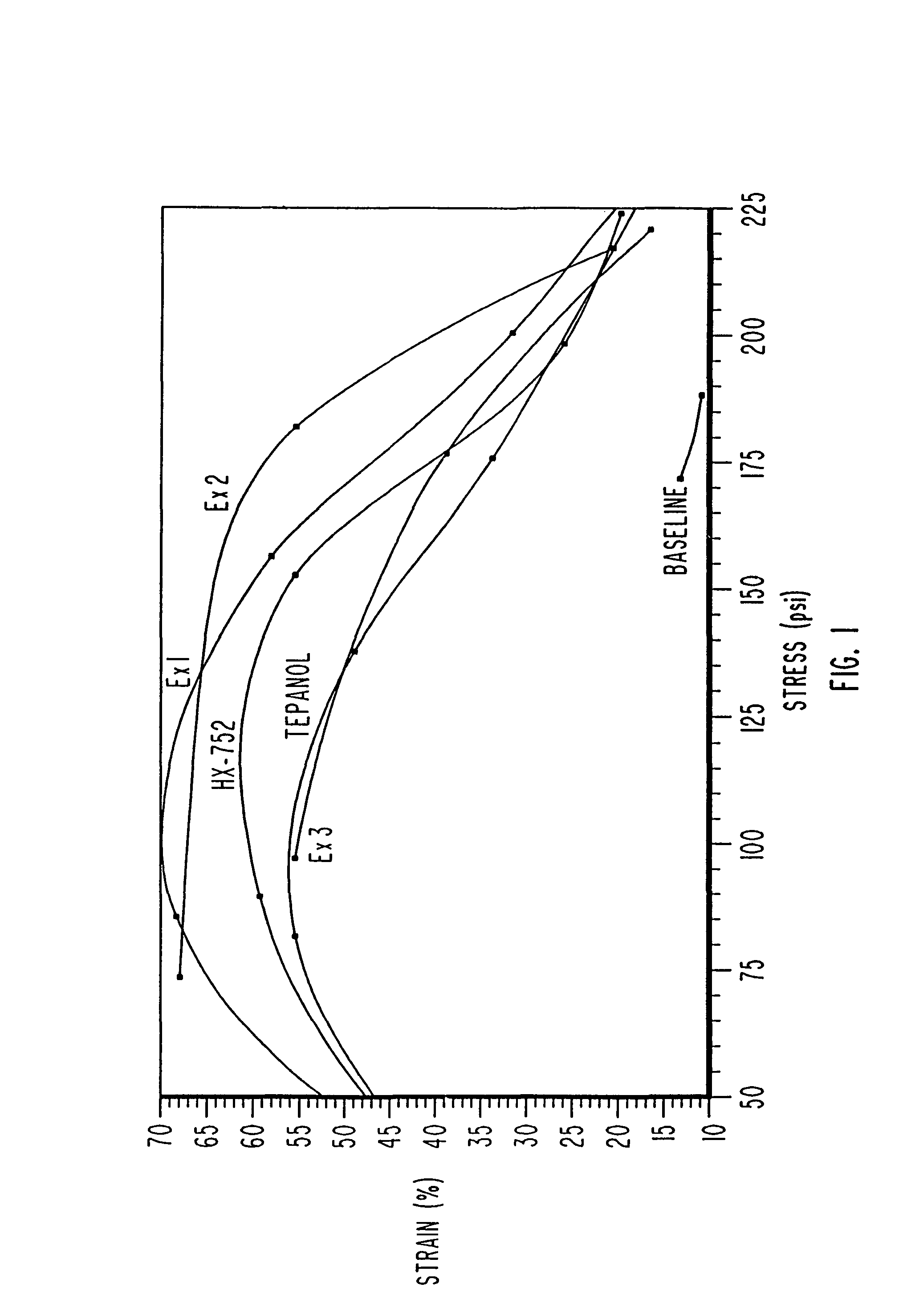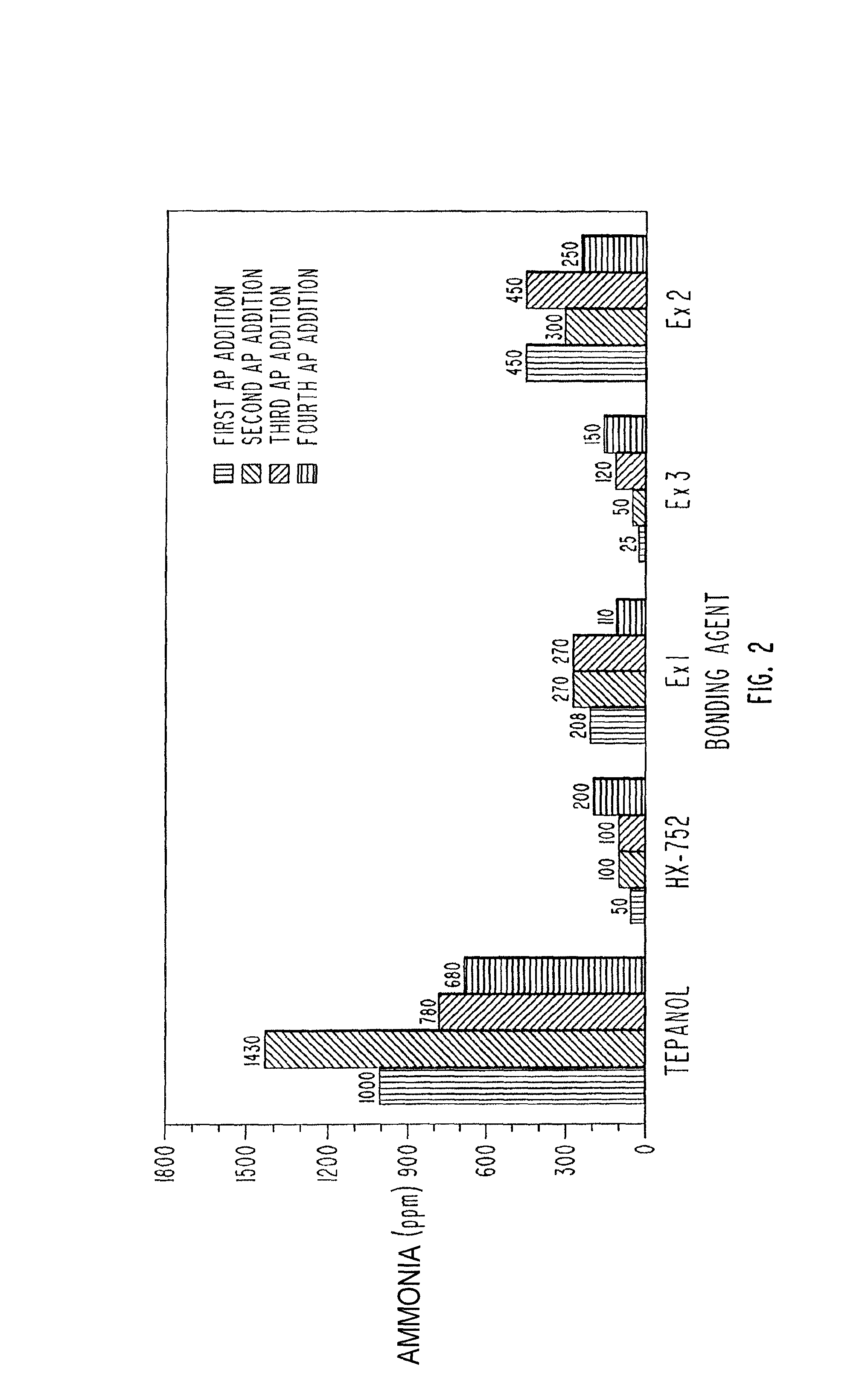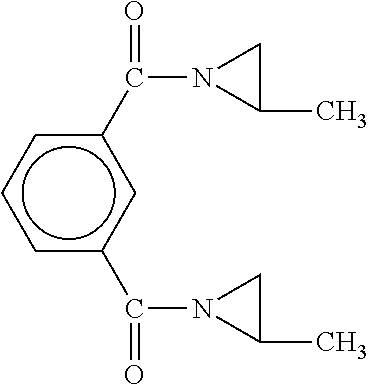Solid propellant bonding agents and methods for their use
a technology of solid propellant and bonding agent, which is applied in the field of polyether compounds, can solve the problems of general instability of unsubstituted imines formed from ammonia and polymerize on standing, and achieve the effect of avoiding cracking of propellant and undesired burning
- Summary
- Abstract
- Description
- Claims
- Application Information
AI Technical Summary
Benefits of technology
Problems solved by technology
Method used
Image
Examples
example 1
[0062]A compound within the scope of the present invention was synthesized and characterized. The reagents used were as follows:
[0063]
MaterialGramsMoles / Equiv.Jeffamine T-40330.000.1936 eq.glycidol4.74 0.064 moles4-nitrobenzaldehyde19.34 0.128 moles
[0064]The synthesis occurred in a 300 ml three-neck round bottom flask equipped with a dean-stark trap, condenser, heating mantle, and thermometer. The synthesis was initiated by placing 30 grams of JEFFAMINE® in the flask along with 4.74 grams of glycidol. The resulting mixture was heated to 30° C., and allowed to exotherm to 45° C. after ½ hour. 19.34 grams of 4-nitrobenzaldehyde was added in 200 ml. of toluene. The mixture was heated to reflux for two hours or until 2 ml. of water was recovered from the trap. The reaction product was then recovered and dried with sodium sulfate. The sodium sulfate was filtered off, and the toluene was removed by vacuum.
[0065]It was found that the material produced comprised a compound having both hyd...
example 2
[0066]In this Example, compounds within the scope of the present invention were synthesized using the general procedure set forth in Example 1. The following materials in the following amounts were reacted:
[0067]
MaterialGramsMoles / Equiv.Jeffamine T-40333.000.1937glycidol4.790.0646benzaldehyde13.700.1291
[0068]The material produced had the following general structure:
[0069]
[0070]The compound produced resulted in markedly decreased amine content, and a resulting reduction in ammonia produced during processing. Table I contains amine reduction data regarding this exemplary material.
[0071]In addition, FIG. 2 provides data regarding the production of ammonia during the formulation of a propellant using these exemplary materials as bonding agents. FIG. 2 illustrates the ammonia produced in parts per million in a one gallon mix. Data is recorded for the first through the fourth addition of ammonium perchlorate. Data is provided for propellants using Tepanol, HX-752, and with the bonding age...
example 3
[0076]In this Example, compounds within the scope of the present invention were synthesized using the general procedure set forth in Example 1. The following materials in the following amounts were reacted:
[0077]
Moles / MaterialGramsEquiv.Jeffamine T-40330.000.1937benzaldehyde20.560.1937
[0078]The material produced had the following general structure:
[0079]
[0080]The compound produced resulted in markedly decreased amine content, and a resulting reduction in ammonia produced during processing. Table I contains amine reduction data regarding this exemplary material.
[0081]In addition, FIG. 2 provides data regarding the production of ammonia during the formulation of a propellant using these exemplary materials as bonding agents. FIG. 2 illustrates the ammonium produced in parts per million in a one gallon mix. Data is recorded for the first through the fourth addition of ammonium perchlorate. Data is provided for propellants using Tepanol, HX-752, and with the bonding agents described in ...
PUM
 Login to View More
Login to View More Abstract
Description
Claims
Application Information
 Login to View More
Login to View More - R&D
- Intellectual Property
- Life Sciences
- Materials
- Tech Scout
- Unparalleled Data Quality
- Higher Quality Content
- 60% Fewer Hallucinations
Browse by: Latest US Patents, China's latest patents, Technical Efficacy Thesaurus, Application Domain, Technology Topic, Popular Technical Reports.
© 2025 PatSnap. All rights reserved.Legal|Privacy policy|Modern Slavery Act Transparency Statement|Sitemap|About US| Contact US: help@patsnap.com



